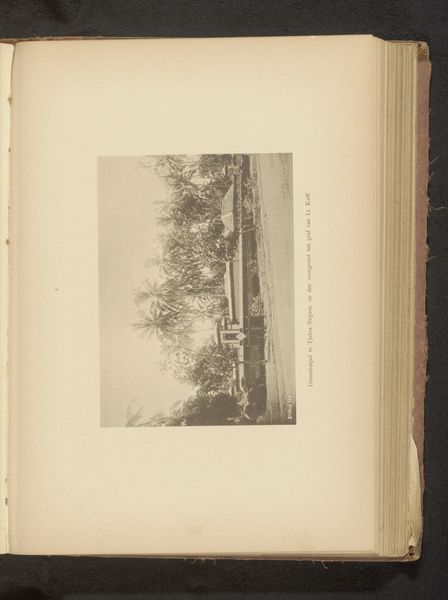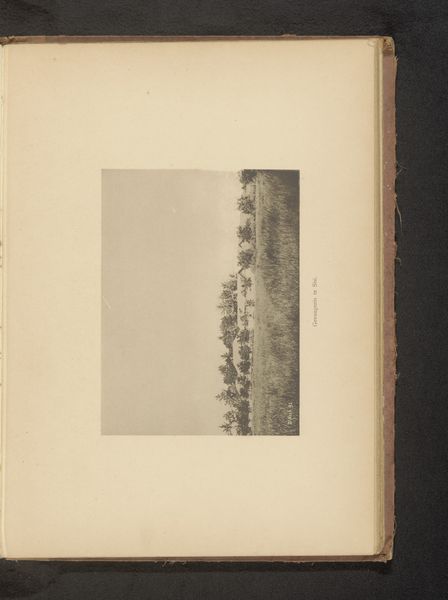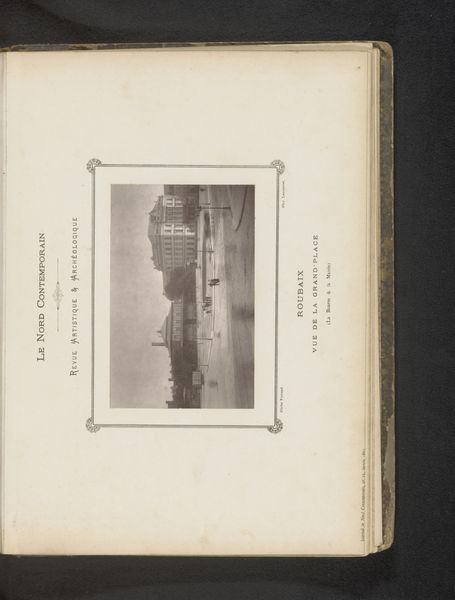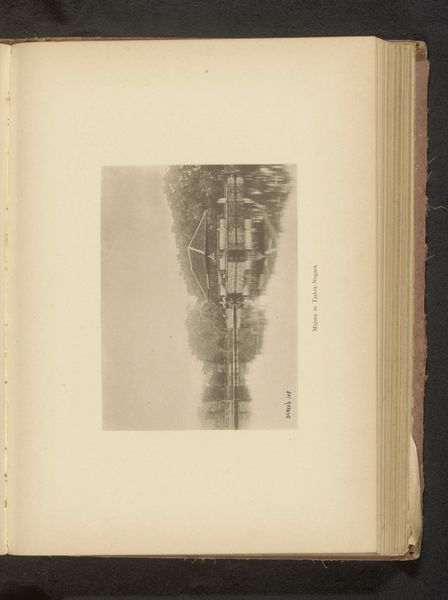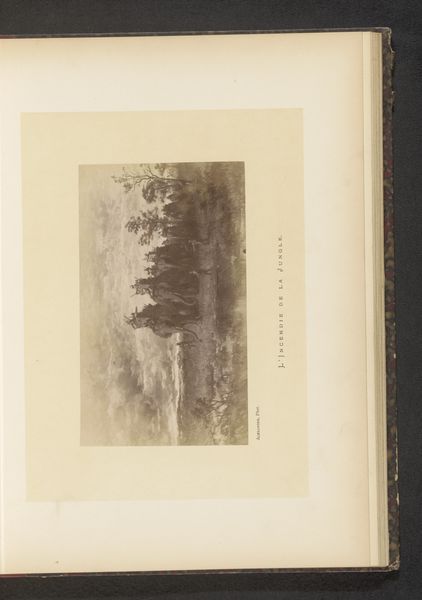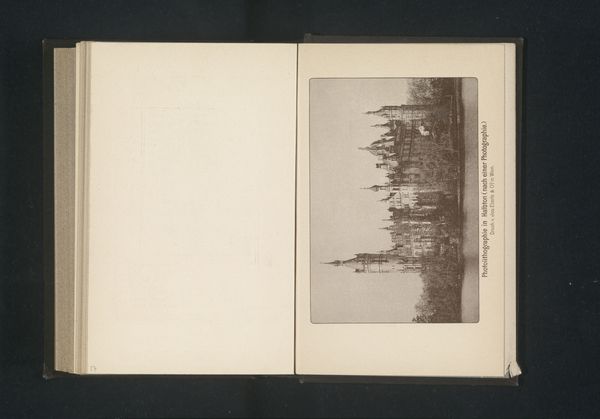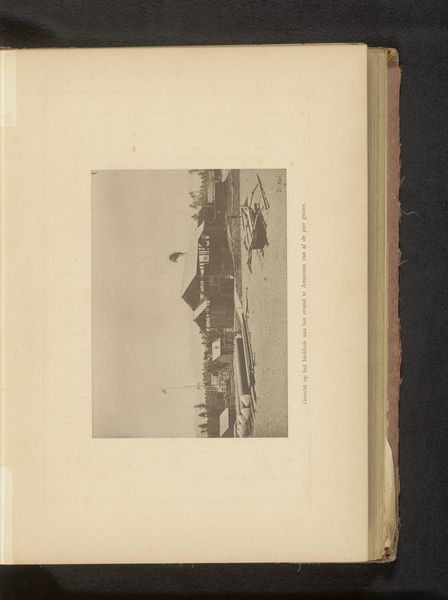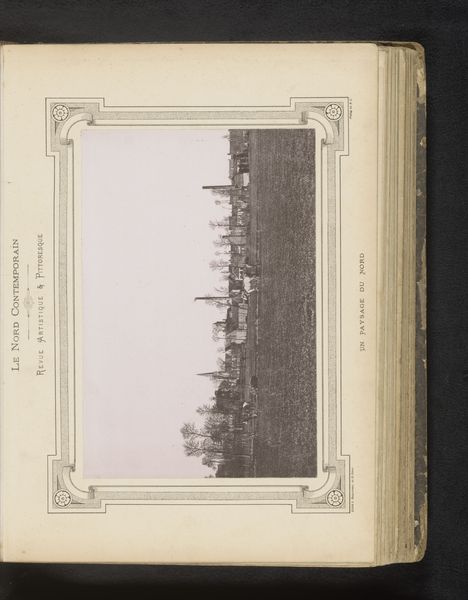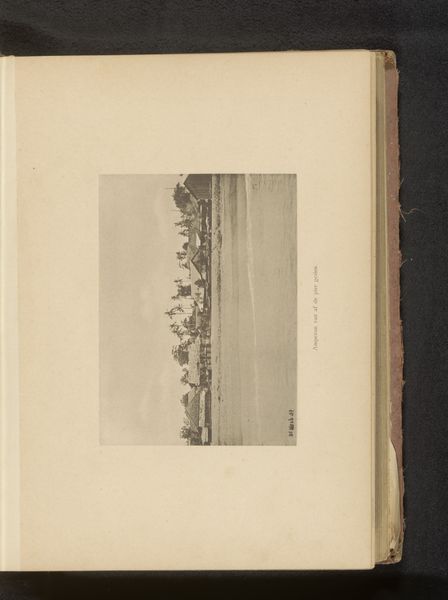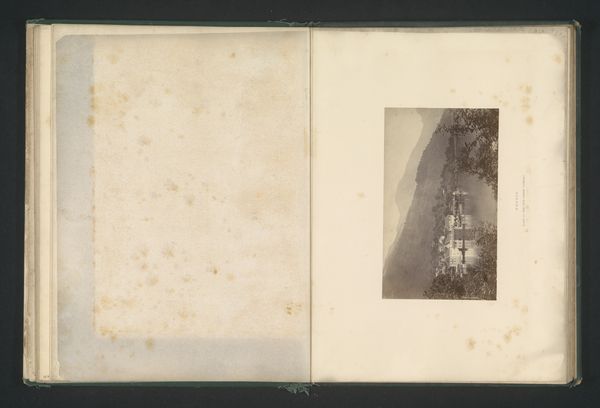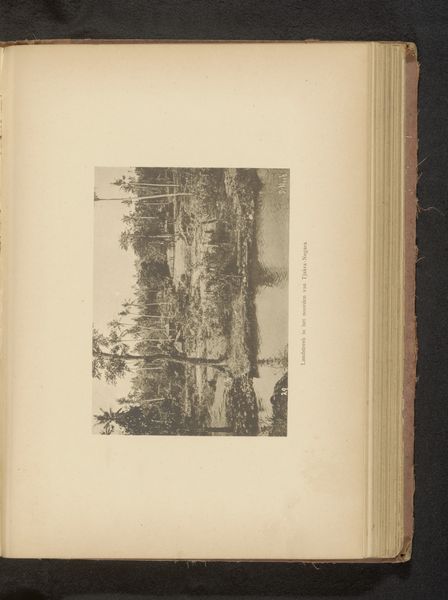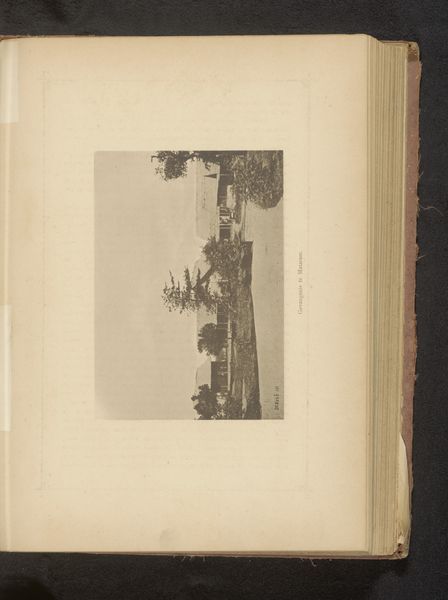
Dimensions: height 160 mm, width 251 mm
Copyright: Rijks Museum: Open Domain
Curator: This gelatin-silver print, titled "Gezicht op La Lionne bij Calais, een kanonneerboot van Frankrijk," which translates to "View of La Lionne at Calais, a gunboat of France", is dated to before 1882, created by an individual identified only as N.C. Editor: There’s a dreamlike quality to it, almost a hazy memory captured in monochrome. The masts of the ships create an intricate, vertical dance against the soft expanse of the water. Curator: It’s striking how N.C. used photography, even at this early stage, to engage with pictorialism—blurring lines, softening edges, making the representational almost impressionistic. Note how the artist utilizes the paper texture, working with it to achieve the aesthetic they envisioned. Editor: That soft focus certainly evokes a sense of nostalgia. It feels like peering into the past, beyond the aesthetic choice. I wonder about the historical context, the maritime industry in Calais, and France’s naval power at that time. These were images of national pride. Was this photograph trying to participate in shaping such a patriotic vision? Curator: Precisely. The photograph served, in part, to represent the strength and capability of France through this gunboat. The medium allowed a dissemination of this vision that painting and sculpture, at the time, did not. Editor: It makes me think of the role photography played in constructing national identities, projecting power, and idealizing particular eras or achievements. It's like the precursor to carefully staged political imagery of our time. Curator: Indeed, the very composition directs the eye towards the ship. This is reinforced by its placement centrally. By thinking of photographic choices such as light and texture, N.C created a visual hierarchy which celebrates this technology. Editor: Studying such work reveals how techniques blend with intentions and impact—not merely documenting history, but actively shaping public memory. The use of a print allows for mass consumption, to shape ideas and values on a much wider scale. Curator: The print, its materiality, the deliberate use of soft focus—they aren’t just technical details; they contribute meaningfully to how we interpret the photograph. The materiality, too, points towards its social function. The paper it’s printed on speaks to value—it suggests these are images worth documenting. Editor: Looking at "La Lionne," I'm reminded of how potent images can be when deployed within social frameworks, influencing perceptions long after their creation. Thank you for contextualizing and drawing out those formal techniques to illustrate their social meaning.
Comments
No comments
Be the first to comment and join the conversation on the ultimate creative platform.
